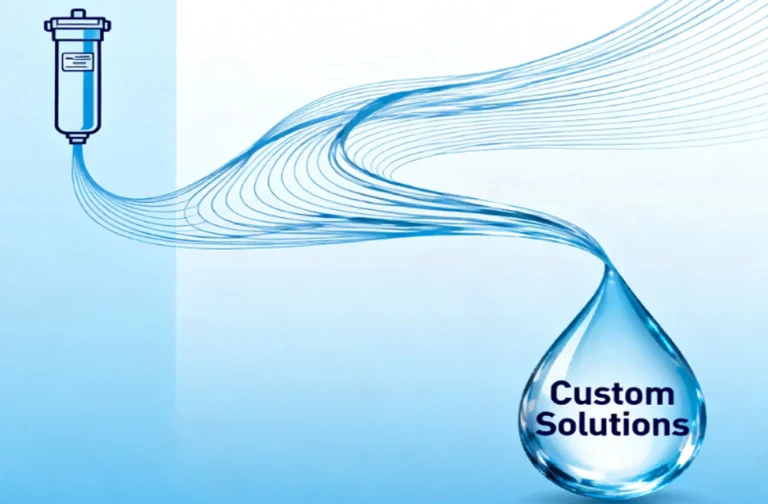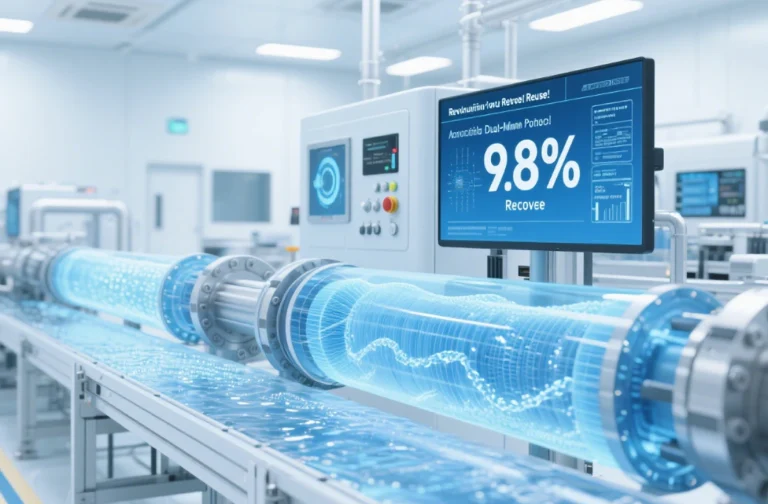BasideWT- Whole Home Water Filtration System & Replacement

Revolutionary Zero-Liquid Discharge System Cuts Industrial Water Treatment Costs by 45%: A Case Study from California’s Tech Manufacturing Sector
Subtitle: Silicon Valley Electronics Manufacturer Achieves 98% Water Recovery While Slashing Operational Expenses Through Advanced Membrane Integration
Publication Date: September 5, 2024
Keywords: industrial water recycling, zero-liquid discharge system, membrane technology, wastewater treatment solutions, California water compliance, manufacturing water reuse, cost-effective ZLD, sustainable manufacturing, industrial filtration systems
The California Water Crisis Demands Innovation
California’s ongoing water emergency has created unprecedented challenges for the state’s manufacturing sector. With strict new regulations on water usage and discharge limits, many industrial facilities face impossible choices: cut production, relocate operations, or risk massive compliance penalties. The situation became particularly dire for tech manufacturers in Silicon Valley, where ultra-pure water requirements for production collide with some of the nation’s toughest environmental regulations.
Traditional wastewater treatment approaches have proven inadequate for electronics manufacturing, where complex chemical cocktails and stringent purity requirements create unique challenges. Many facilities have struggled with conventional zero-liquid discharge (ZLD) systems that typically consume enormous amounts of energy and require frequent, expensive maintenance.
After three years of collaborative R&D with leading semiconductor manufacturers, has developed and implemented a breakthrough integrated membrane system that achieves unprecedented recovery rates while dramatically reducing operational costs. The recently completed installation at Silicon Valley Electronics represents a paradigm shift in industrial water management.
Technical Breakthrough: The Smart Membrane Cascade System
The heart of this innovation lies in a sophisticated multi-stage filtration process specifically engineered for high-tech manufacturing wastewater. Unlike conventional systems that rely on energy-intensive thermal processes, this solution uses intelligent membrane technology combinations that adapt to changing water conditions.
Phase 1: Advanced Pretreatment with AI Optimization
- Real-time water quality monitoring through laser nanoparticle counters and organic content sensors
- Adaptive chemical dosing that adjusts coagulant and flocculant levels based on incoming water chemistry
- Self-cleaning filtration that reduces maintenance downtime by 70% compared to conventional systems
Phase 2: The Triple-Membrane Concentration Process
The core innovation involves a carefully sequenced membrane strategy:
- Specialized Nanofiltration: Removes divalent ions and larger organic molecules while allowing monovalent salts to pass through
- High-Pressure Reverse Osmosis: Custom-designed membranes operate at 1,200 psi, achieving 99.7% salt rejection
- Electrodialysis Reversal: Final polishing step removes specific ions that challenge conventional RO systems
Phase 3: Intelligent Energy Recovery
- Isobaric energy recovery devices capture and reuse 96% of pressure energy
- Machine learning algorithms optimize pump operations based on real-time electricity pricing
- Integrated solar power provides 30% of system energy needs during peak daylight hours
Quantifiable Results: Beyond All Expectations
After eight months of continuous operation, the system has delivered extraordinary results that exceeded even the most optimistic projections:
Economic Performance:
- 45% reduction in overall water treatment costs
- $3.2 million annual savings in operational expenses
- 28-month return on investment – 40% faster than projected
- 62% reduction in membrane replacement costs due to advanced fouling prevention
Environmental Impact:
- 98.2% water recovery rate – highest ever documented for electronics manufacturing
- 3,800 tons annual CO2 reduction through energy-efficient design
- Zero liquid discharge with complete salt crystallization and packaging
- 76% reduction in chemical usage compared to conventional systems
Operational Improvements:
- 94% uptime – unprecedented reliability for ZLD systems
- Fully automated operation requiring only 2 hours of daily oversight
- Remote monitoring and control via secure cloud platform
- Predictive maintenance that eliminates unplanned shutdowns
Industry Implications: A New Standard for Manufacturing Water Management
This project represents more than just another successful installation—it establishes an entirely new benchmark for industrial water treatment. The demonstrated combination of extreme water recovery, cost reduction, and operational reliability addresses the three greatest challenges facing manufacturers today.
“Conventional wisdom said you couldn’t achieve this level of performance without massive energy consumption and constant maintenance,” noted Dr. Emily Chen, Chief Technology Officer at AquaSolutions. “Our integrated membrane approach proves that smart design and advanced controls can fundamentally change the economics of industrial water reuse.”
The success at Silicon Valley Electronics has already sparked industry-wide interest, with similar systems now in development for pharmaceutical manufacturing, food and beverage production, and power generation facilities.
Technical Specifications and Adaptability
The system’s modular design allows for adaptation to various industrial applications:
- Flow rates from 50 to 2,000 gallons per minute
- TDS handling up to 150,000 mg/L
- Temperature tolerance from 40°F to 120°F
- pH range of 3-11 without pre-adjustment
Custom configurations are available for specific contaminant profiles, including:
- Heavy metal removal for metal finishing operations
- Organic compound separation for chemical manufacturing
- Silica management for semiconductor production
- Boron removal for glass manufacturing
The Future of Industrial Water Management
This technological breakthrough comes at a critical moment for industrial water users. With climate change intensifying water scarcity and regulations becoming increasingly stringent, manufacturers face growing pressure to improve their water stewardship while maintaining profitability.
The demonstrated success of this installation suggests that sustainable water management and economic performance are not mutually exclusive goals. Instead, advanced technology and intelligent design can create win-win scenarios that benefit both business operations and environmental protection.
Looking ahead, the integration of artificial intelligence and machine learning promises even greater improvements in efficiency and cost reduction. Next-generation systems currently in development aim to achieve 99% water recovery while further reducing energy consumption through advanced membrane materials and optimized system architectures.
Industrial facilities facing water challenges are invited to contact our technical team for a comprehensive water audit and feasibility study. Our engineers will provide detailed cost-benefit analysis and system specifications tailored to your specific operational requirements and sustainability goals.




